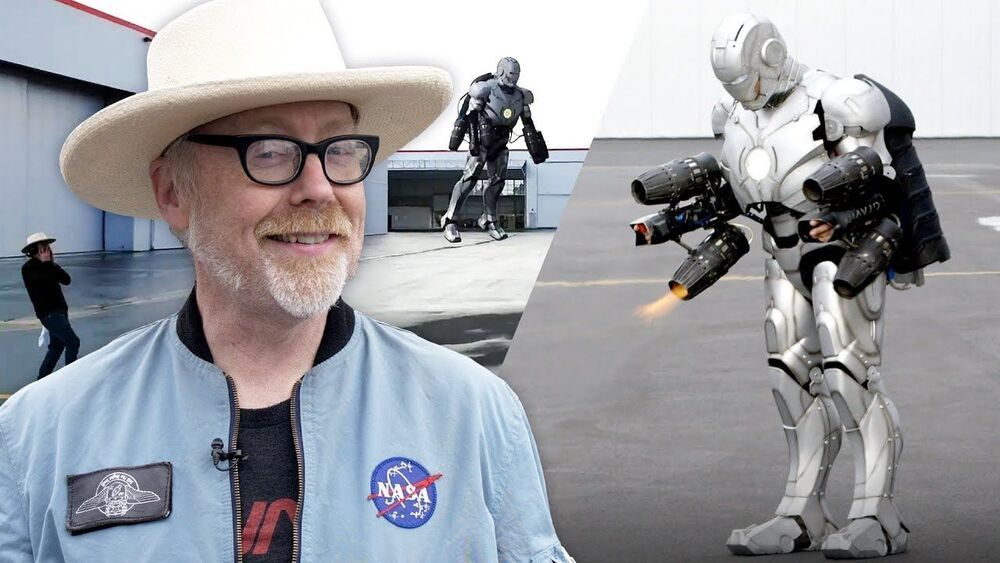May 21, 2021
Aliens are a mirror to humanity
Posted by Lawrence Klaes in categories: alien life, futurism
Aliens symbolize the best and worst of humanity. When we dream of aliens, we are pondering our future selves.

Aliens symbolize the best and worst of humanity. When we dream of aliens, we are pondering our future selves.
Astronomers have long predicted that deep beneath Neptune’s thick blue clouds lies a super-hot body of water that, despite its high temperature, never boils because of its incredibly high-pressure atmosphere. Uranus, another planet in the outer solar system of similar size and composition, is also believed to have a similar water-rich interior. Unfortunately, due to their distances from Earth, it is hard to directly probe these two planets to test our assumption. But scientists have found novel ways of testing their theories about these ice giants from Earth.
As described in a newly-published study from Nature Astronomy, scientists recreated the pressure and temperature of the interiors of Neptune and Uranus in a lab. The aim of the experiments was to test hypotheses about the chemistry of the deep water within these planets. But the study could have additional implications for what we know about potentially habitable planets in other solar systems.
“We were seeking to extend our knowledge of the deep interior of ice giants and determine what water-rock interactions at extreme conditions might exist,” said lead author Taehyun Kim, of Yonsei University in South Korea. “Ice giants and some exoplanets have very deep water layers, unlike terrestrial planets. We proposed the possibility of an atomic-scale mixing of two of the planet-building materials (water and rock) in the interiors of ice giants.”
In our ongoing search to continuously improve our health, we occasionally pay lip service to the bacteria that live inside our gut. Normally this concern rarely manifests as anything more than occasionally remembering to buy some of those small bottles of pro-biotic yoghurts while shopping for your…
Recent discoveries have led to the conclusion that the gut plays an important role in cognitive function, with a large amount of research into understanding what is known as the gut-brain axis, which is the collective name given to the biochemical signalling pathways which take place between the gastrointestinal tract and the central nervous system. With an ever-increasing understanding of this pathway, along with an expanded understand of the gut flora (which was found to decline with age), researchers started to ask how the gut flora are involved in the ageing process.
In order to test how exactly ageing gut flora effects the gut-brain axis, researchers at the University of East Anglia conducted a faecal transplant from elderly mice into younger mice. Following this transplant, the young mice were then put through a serious of tests to assess their cognitive abilities. The younger mice showed significant changes in their microbial profiles, as well as significantly impaired capacity for spatial learning, as well as a decreased capacity for memorisation. These mice also showed an altered expression of proteins associated with neurotransmission and neuroplasticity, along with changes in the mice’s hippocampus, which is responsible for allowing the mice to memories new information, as well as recalling previous memories.
Continue reading “Faecal transplantation: the cure for forgetfulness?” »
To begin with, why do we use mice in medical and biological research? The answer to this question is fairly straight forward. Mice are cheap, they grow quickly, and the public rarely object to experimentations involving mice. However, mice offer something that is far more important than simple pragmatism, as despite being significantly smaller and externally dissimilar to humans, our two species share an awful lot of similarities. Almost every gene found within mice share functions with genes found within humans, with many genes being essentially identical (with the obvious exception of genetic variation found within all species). This means that anatomically mice are remarkably similar to humans.
Now, this is where for the sake of clarity it would be best to break down biomedical research into two categories. Physiological research and pharmaceutical research, as the success of the mouse model should probably be judges separately depending upon the research that is being carried out. Separating the question of the usefulness of the mouse model down into these two categories also solves the function of more accurately focusing the ire of its critics.
The usefulness of the mouse model in the field of physiological research is largely unquestioned at this point. We have quite literally filled entire textbooks with the information we have gained from studying mice, especially in the field of genetics and pathology. The similarities between humans and mice are so prevalent that it is in fact possible to create functioning human/mouse hybrids, known as ‘genetically engineered mouse models’ or ‘GEMMs’. Essentially, GEMMs are mice that have had the mouse version of a particular gene replaced with its human equivalent. This is an exceptionally powerful tool for medical research, and has led to numerous medical breakthroughs, including most notably our current treatment of acute promyelocytic leukaemia (APL), which was created using GEMMs.
Astronomers have discovered an exceedingly old star at the edge of our galaxy that seems to have formed only a few million years after the Big Bang – and what they are learning from it could affect their understanding of the birth of the universe.
In a study published last week, researchers found the star during an astronomical survey of the southern sky with a technique called narrowband photometry, which measures the brightness of distant stars in different wavelengths of light and can reveal stars that have low levels of heavy elements.
They then studied the star – known by its survey number as SPLUS J210428.01−004934.2, or SPLUS J2104−0049 for short – with high-resolution spectroscopy to determine its chemical makeup.
People can understand these “iconic vocalizations” regardless of their spoken language.
“Iconic vocalizations” may have been the missing link that allowed the first human languages to develop, a new study suggests.

Discover the advantages of 3D printed jewelry, the best materials, and get inspired by the most interesting projects!
3D printing helps sculptor Julian Voss-Andreae create monumental sculptures that are later cast in bronze.
In 2018, Cornell researchers built a high-powered detector that, in combination with an algorithm-driven process called ptychography, set a world record by tripling the resolution of a state-of-the-art electron microscope.
As successful as it was, that approach had a weakness. It only worked with ultrathin samples that were a few atoms thick. Anything thicker would cause the electrons to scatter in ways that could not be disentangled.
Now a team, again led by David Muller, the Samuel B. Eckert Professor of Engineering, has bested its own record by a factor of two with an electron microscope pixel array detector (EMPAD) that incorporates even more sophisticated 3D reconstruction algorithms.

Adam Savage, one of the creators and hosts of the beloved show Mythbusters, collaborated with his friend Richard Browning, founder of Gravity, to demonstrate a flying, bulletproof Iron Man suit that was 3D printed from Titanium. This is a feat that has to be seen to be believed.
The creation of the suit will be featured on a new show that Savage is doing with the Science Channel. It all started when Savage visited the Colorado School of Mines and one of the engineers told him they had Titanium 3D printers, adding “if you want to print something weird, let us know.” To which Savage replied, “Really? How about a full suit of Iron Man armor?”